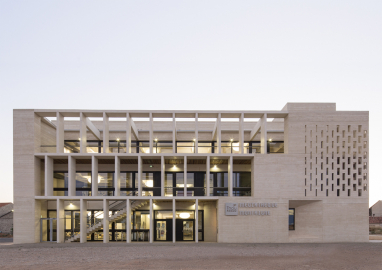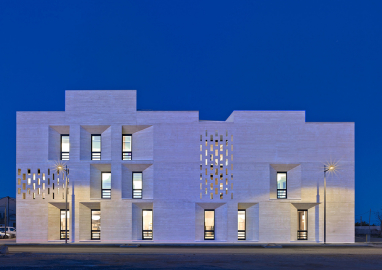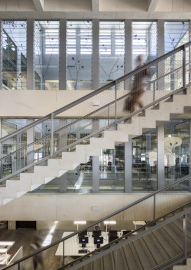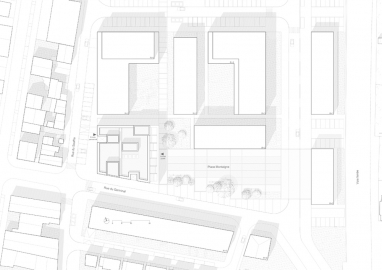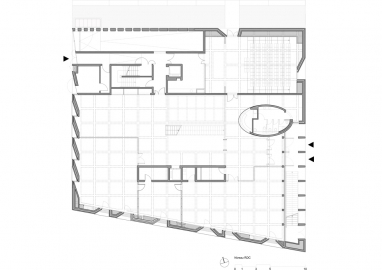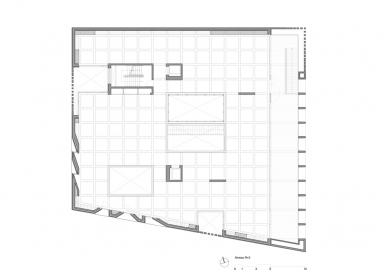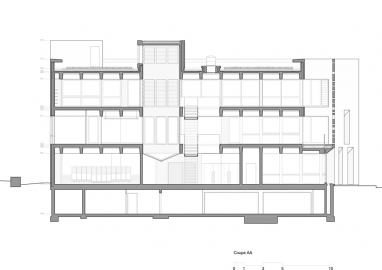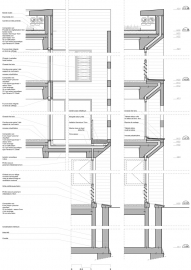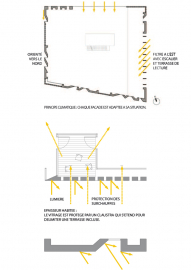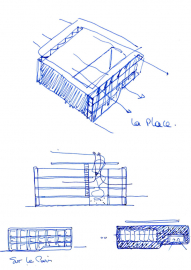Montaigne Multimedia Library
The Montaigne Multimedia Library – a Mediterranean monolith, strong and frugal
Located on the trapezoid-shaped site of a former sulfur factory, the mineral volume of the Montaigne Multimedia Library visually anchors the future Place du Contr’un, a soon-to-be major public space for the eco-district of Pielles in Frontignan, France.
The building is uniquely innovative. An exterior façade system of load-bearing walls – composed of a system of white concrete slabs sandwiching a layer of insulation – lend the building’s exterior a uniform, identifiable and sculpted aesthetic. The solidity stands in contrast to the building’s interior with its largely open appearance characterized by ribbed floor slabs supported by a few vertical supporting elements. The result is a floor plan largely unencumbered, one that provides a high-degree of user flexibility.
The initial client’s request for this first building in the eco-district, was to guarantee interior thermal comfort during summer months, without the reliance on mechanical air conditioning systems.
Given the building’s Mediterranean location, orientation was the determining factor in the configuration of exterior bays.
Large floor-to-ceiling openings provide ambient light for offices lining the Northern façade, whereas recessed glazed openings make up the Southern façade.
The Eastern façade is a series of sliding glass bays protected by porticos and canvas shading elements.
On the Western side, thin gills-like openings oriented to the North bathe the interior with orchestrated rays of light and vertical trellis systems create cutouts in the floors and running partitions line the outdoor terraces.
The recessed openings create unique folds in the concrete façades of the building with the wall thickness being sufficiently thick to incorporate multiple components: ventilation ducts (for turbofan double-flow ventilation system) and collectors used by a floor-slab heating system, shelving and storage, movable partitions, built-in seating.
The building’s mass, with its compact nature, makes use of the principle of thermal inertia, which thwarts sharp temperature swings and allows for internal temperature moderation. The building also uses geothemal wells, reaching 100m underground and process of free cooling. By day, due to the building’s wall thickness that stores daytime heat. By night, the process reverses, the walls “unloading” their accumulated heat by several means : natural (via atrium) or accelerated (via two smoke evacuation turrets).
The atrium which rises the full height of the volume, distributes fresh air arriving from slatted, glazed intakes in the exterior façades and exhausts “used” air through summit opening. The orientation and opening of the slats are automatically controled by interior thermal probes. Some fifteen air movers distribute fresh air evenly amongst floor levels, and help to ensure the natural cycle of ventilation continues to push used air towards the summit of the volume.
Repurposed boards of pine line the majority of the interior walls, these elements making use of the crates that held exterior formwork used during erection of the façades.

